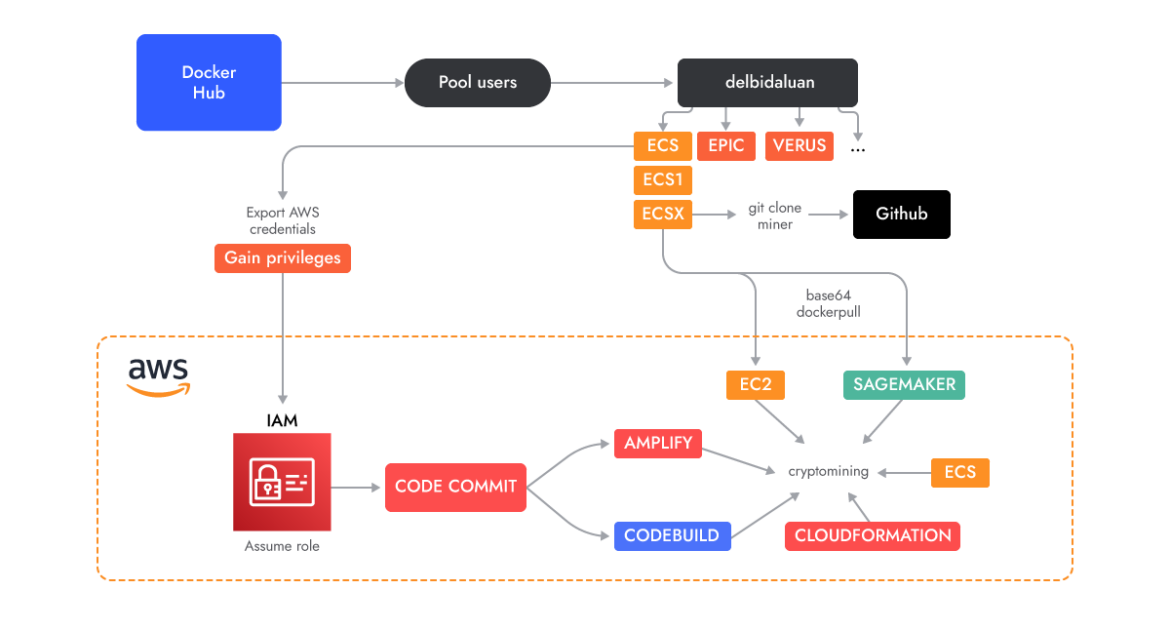The Sysdig Threat Research Team (TRT) has uncovered a novel cloud-native cryptojacking operation which they’ve named AMBERSQUID. This operation leverages AWS services not commonly used by attackers, such as AWS Amplify, AWS Fargate, and Amazon SageMaker.
The uncommon nature of these services means that they are often overlooked from a security perspective, and the AMBERSQUID operation can cost victims more than $10,000/day.
The AMBERSQUID operation was able to exploit cloud services without triggering the AWS requirement for approval of more resources, as would be the case if they only spammed EC2 instances. Targeting multiple services also poses additional challenges, like incident response, since it requires finding and killing all miners in each exploited service.

Sysdig discovered AMBERSQUID by performing an analysis of over 1.7M Linux images in order to understand what kind of malicious payloads are hiding in the containers images on Docker Hub.
This dangerous container image didn’t raise any alarms during static scanning for known indicators or malicious binaries. It was only when the container was run that its cross-service cryptojacking activities became obvious. This is consistent with the findings of Sysdig’s 2023 Cloud Threat Report, in which they noted that 10% of malicious images are missed by static scanning alone.
“With medium confidence, we attribute this operation to Indonesian attackers based on the use of Indonesian language in scripts and usernames. We also regularly see freejacking and cryptojacking attacks as a lucrative source of income for Indonesian attackers due to their low cost of living,” states Sysdig.
Technical Analysis
Docker Hub
The original container that initiated the investigation was found on Docker Hub, but the scope quickly expanded to include a number of accounts. Most of these accounts started with very basic container images running a cryptominer. However, they eventually switched over to the AWS-specific services described in this research.
Timeline
It is interesting to note that the first account was created in May 2022, and its development continued through August. The attackers continued pushing cryptominer images with different accounts until March 2023, when they created a GitHub account. Before creating their own repositories, making their operation a bit more evasive, the attackers downloaded miners from popular GitHub repositories and imported them into the layers of the Docker images. Their repositories don’t have any source code (yet) but they do provide the miners inside archives downloadable as releases. Those binaries are usually called “test,” packed with UPX and malformed so they cannot be easily unpacked.
To find out more, the whole blog can be found here.








